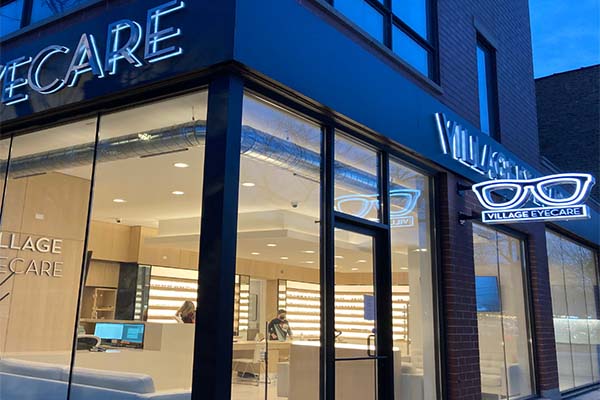Leading Eye Doctors in Andalusia: Schedule Your Consultation Today
Leading Eye Doctors in Andalusia: Schedule Your Consultation Today
Blog Article
Understanding the Various Vision Modification Procedures Available for Clearer View
In the realm of vision correction procedures, a plethora of alternatives exist to resolve refractive mistakes and provide people with clearer sight. From the extensively recognized LASIK surgical procedure to much less invasive procedures like PRK and implantable lenses, the field of ophthalmology supplies a variety of methods customized to match different needs and choices. Each procedure includes its own collection of factors to consider, benefits, and possible threats. Understanding the nuances of these vision improvement techniques is critical for making informed choices regarding one's aesthetic health. Let's check out the intricacies of these procedures and clarified the course to achieving improved vision clarity.
LASIK Surgery
LASIK surgical treatment is a common refractive procedure used to deal with vision problems such as nearsightedness, astigmatism, and farsightedness. This medical technique, which represents Laser-Assisted sitting Keratomileusis, intends to reshape the cornea to boost exactly how light is concentrated on the retina, eventually enhancing vision clarity. During the treatment, a thin flap is created on the cornea, and a laser is utilized to get rid of precise amounts of tissue to reshape it appropriately. This reshaping enables light to be accurately concentrated onto the retina, fixing refractive mistakes.
One of the main advantages of LASIK surgery is the quick improvement in vision experienced by patients. In general, LASIK surgical procedure is a preferred choice for individuals looking for a long-lasting option for their vision issues.
PRK Treatment

PRK is an appropriate alternative for individuals with slim corneas or those at a greater threat of eye injuries, as it does not involve creating a corneal flap. The recovery procedure for PRK is slightly longer contrasted to LASIK, as the epithelium needs time to regenerate. Clients might experience pain and blurred vision for a few days complying with the treatment.
In spite of the longer recuperation time, PRK can generate excellent lead to vision renovation, making it a valuable option for those who might not be ideal prospects for LASIK surgical treatment. - Neurologist Andalusia
Implantable Lenses
Unlike PRK where the cornea is reshaped directly, implantable lenses supply another method for dealing with vision by putting fabricated lenses inside the eye. This treatment is specifically valuable for people with high levels of farsightedness, nearsightedness, or astigmatism who might not appropriate prospects for laser surgical treatments like LASIK or PRK.
Implantable lenses, also called phakic intraocular lenses, job by supplementing the eye's all-natural lens with an artificial one. These lenses can be positioned before the all-natural lens (anterior chamber) or behind the iris and before the all-natural lens (posterior chamber) By changing the power and positioning of these lenses, ophthalmologists can properly fix refractive errors and improve aesthetic skill.
One advantage of implantable lenses is that they are exchangeable and detachable, providing flexibility for future adjustments. As with any type of surgical procedure, there are dangers entailed, such as infection or cataract formation. Patients thinking about implantable lenses must seek advice from with an eye care specialist to identify one of the most appropriate option based upon their individual requirements and eye health and wellness.
Corneal Rings

The procedure for placing corneal rings is minimally invasive and relatively quick, usually executed as an outpatient procedure. Throughout the surgery, the ophthalmologist makes a small incision in the cornea and inserts the rings at a specific deepness. As soon as in position, the rings help to improve the cornea, offering a smoother surface for light to get in the eye, which can cause more clear vision.
Corneal rings are thought about a reversible procedure, as they can be gotten rid of or changed if required. While they might not entirely remove the demand for glasses or get in touch with lenses, corneal rings can considerably improve vision high quality and total visual convenience for people with keratoconus or other corneal abnormalities.
Refractive Lens Exchange
Adhering to the modification of corneal irregularities with treatments like corneal rings, another vision correction technique that can deal with refractive errors is Refractive Lens Exchange (RLE) RLE is a surgery that entails replacing the eye's natural lens with a fabricated intraocular lens (IOL) to correct refractive errors such as presbyopia, nearsightedness, and farsightedness. This procedure is specifically valuable for people who might not be ideal candidates for treatments like LASIK or PRK because of factors such as thin corneas or high refractive errors.
RLE is similar to cataract surgical procedure, as both include removing the eye's natural lens; nonetheless, in RLE, the lens is clear, not gloomy as in cataracts. The synthetic lens implanted during RLE can be tailored to resolve the person's specific refractive error, providing clear vision at numerous distances. Recuperation time for RLE is reasonably More hints quick, and individuals can anticipate improved vision right after the procedure. Similar to any surgery, prospective risks and difficulties exist, so a thorough assessment with an eye care specialist is vital to figure out if RLE is the best vision improvement alternative.
Conclusion

In the realm of vision adjustment treatments, a plethora of choices exist to deal with refractive mistakes and supply people with clearer view.LASIK surgical procedure is a common refractive try this web-site treatment utilized to correct vision troubles such as nearsightedness, farsightedness, and astigmatism.While likewise a typical refractive procedure, the PRK (Photorefractive Keratectomy) technique varies from LASIK surgery in its technique to dealing with vision problems.Complying with the adjustment of corneal abnormalities with treatments like corneal rings, another vision correction strategy that can deal with refractive errors is Refractive Lens Exchange (RLE) LASIK surgical procedure, PRK treatment, implantable lenses, corneal rings, and refractive lens exchange are all options that can deal with various vision issues.
Report this page